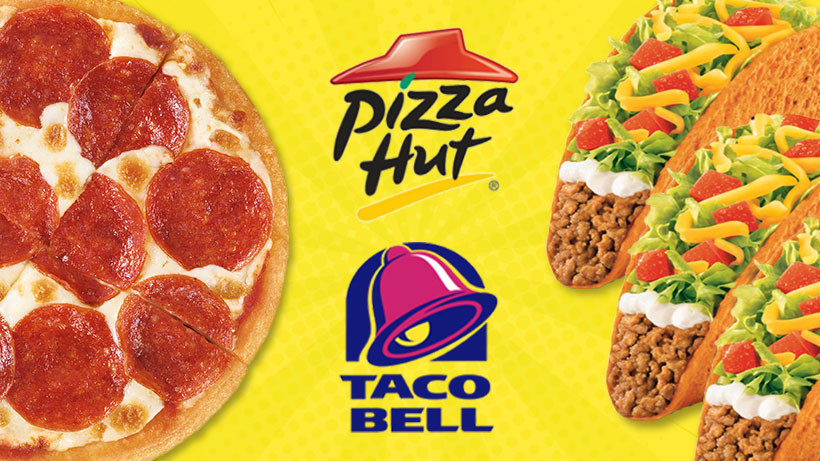Fast-food giant McDonald's made a critical choice during the early 1990s recession that ultimately resulted in a loss of market share: McDonald’s chose to not advertise during a recession.
Spending by consumers was declining, and the fast-food sector was hit particularly hard. To counter, McDonald's cut expenses wherever it could. The company mistakenly thought that cutting back on advertising would help them weather the economic downturn. That proved to be a costly error.
While McDonald's reduced its spend to advertise during a recession, rivals like Pizza Hut and Taco Bell increased theirs. Because consumers were paying greater attention to where they were spending their money, these businesses understood that advertising could be even more effective during hard times.
It's time to deliver.
During the early ’90s, Pizza Hut strategically focused on increasing value and decided to offer more affordable options to remain competitive. Pizza Hut introduced value-focused promotions, such as the "Big New Yorker" pizza, which was priced lower than many of the chain's other menu items. Additionally, the company introduced a two-for-one pizza deal, which was highly successful and helped to increase customer traffic to Pizza Hut outlets.
The business kept introducing new menu items, such as the now-famous Stuffed Crust pizza, which was first offered in 1995 and rapidly turned into a hit. Other innovative choices included value-based menu items like the P'zone and the Big Dipper.
Pizza Hut made significant advertising investments to support the new business strategy. It was understood just how crucial it was to keep its market presence and advertise during a recession. The business ran print and television ads emphasizing its value-oriented deals and launched a highly effective marketing campaign with the slogan "Pizza Hut delivers," emphasizing the dependability and convenience of Pizza Hut's delivery service.
The result? A 61% increase in sales during 1990-1991.
Run for the border.
Taco Bell concentrated its efforts on developing affordable options to draw customers, much like Pizza Hut did. The business launched various value-oriented campaigns, including the "59-79-99" menu, which featured items at these price points. These promotions were quite effective because customers valued the menu's affordability and preferred Taco Bell over other fast-food restaurants.
The growing fast-food chain later added innovative menu items, such as the now-famous Chalupa, which debuted in 1999 and rapidly gained popularity among customers. Taco Bell also debuted a variety of other choices that were intended to be inexpensive and cutting-edge, like the Crunchwrap Supreme.
Taco Bell enjoyed a reported 40% sales increase during this time with their choice to advertise during a recession.
But what about the "Golden Arches"?
While customers chose to frequent the fast-food restaurants that were top-of-mind due to the increased advertising share-of-voice, McDonald's experienced a significant decline in market share. This decline was also reflected in the company's sales, which fell by 28%. Moreover, the brand value of McDonald's faded. Consumers were cutting back on their purchases and resorted to fast-food chains that were running specials and promotions in quest of value. Pizza Hut and Taco Bell were undoubtedly two of the biggest winners.
McDonald's market share losses were a result of its excessively slow response to the "value movement." In the wake of the recession, McDonald's did make an effort to regain lost ground. It increased their spend to advertise during a recession and began offering more value-oriented deals. But the damage was done and McDonald’s was never able to fully regain its lost market share.
Lesson learned.
Advertising is a critical component of brand awareness and market share. Even in an economic downturn, companies would be foolish to abandon advertising efforts. In fact, companies can enjoy an increased share-of-voice by advertising during a recession while others pull back or go silent.
Pizza Hut and Taco Bell have maintained positions as leading fast-food chains. Both still place a strong emphasis on value, offer affordable menu options, and innovate with new menu items. Unsurprisingly, Pizza Hut and Taco Bell continue their investments in advertising even with their choice to advertise during a recession. The difference of late is the shifting of budgets into digital and social marketing to reach customers where they are spending more of their time.
As the nation’s leading positioning ad agency, Innis Maggiore is first in line to support advertising during a recession. Every study shows brands who advertise during a recession grew and often, overtook their rivals as the market leader. If you’re not sure how to manage your advertising through a recession – and now is the best time to plan for that – contact Innis Maggiore.



